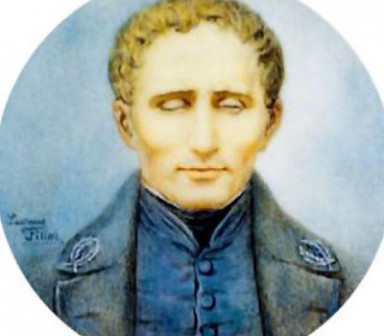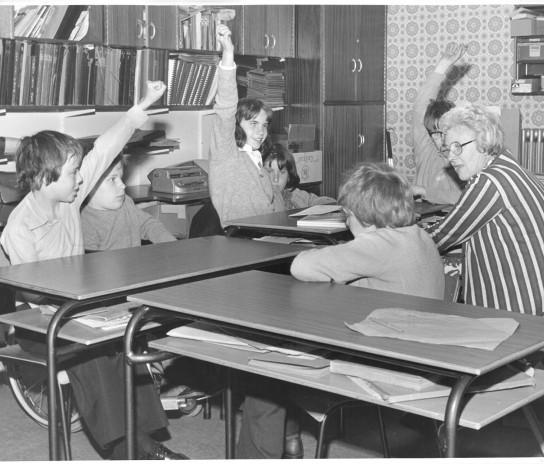Louis Braille is the creator of braille – a code that enables blind and visually impaired people to read and write independently. His transformative system is still used today by people who have a visual impairment.

Early life
Louis Braille, born 4 January 1809, was from a small town in France called Coupvray. He and his three siblings lived with their parents, Monique Braille and Simon-René Braille. Louis’ father worked as a village saddler.
As a young boy, Louis often spent time playing in his father’s workshop. One day, aged three, he was attempting to make holes in a piece of leather with an awl. As he pressed down, the sharp pointed tool slipped and struck him in one eye.
Louis’ damaged eye could not be treated and in the weeks that followed the young boy’s eye became badly infected. The infection spread to his other eye. By the time he was five years old, Louis was completely blind in both eyes.
A diligent and bright student, at 10 years old Louis started attending one of the first blind schools in the world: The Royal Institution for Blind Youth in Paris.
Louis Braille is introduced to ‘night writing’
In 1821, Louis learned of ‘night writing’ – a tactile communication system devised by Captain Charles Barbier of the French army. Intended for transmitting battlefield communications in darkness, night writing used a code of dots and dashes set on thick paper. These impressions could be interpreted by the touch of a finger and letting soldiers communicate on the battlefield without needing to speak or light candles.
It seems Louis, who was a very bright student, was inspired by Barbier’s complicated system and he set about simplifying it so it could be more user friendly for blind people. In 1824, by the time he was 15, he had trimmed Barbier’s 12 dots into six and found 63 ways to use a six-dot cell in an area no bigger than a fingertip. He also extended his code for music and later mathematics.
Reaction to braille
Louis published his system in 1829 and in the following years produced a number of publications about braille.
In his mid-twenties Louis began teaching history, algebra and geometry at the Royal Institution for Blind Youth. His ear for music enabled him to become an accomplished cellist and organist. Between 1834 and 1839 he held the position of organist in Church of Saint-Nicolas-des-Champs and later at the Church of Saint-Vincent-de-Paul.
But there was scepticism about Louis’ braille code and despite its popularity with blind pupils it was strongly contested by sighted teachers and there was much resistance to its use. This meant that blind students had to study braille alone and in their own time. Even at the Royal Institution where Louis studied and taught, braille was not on the curriculum until 1854.
The braille era
Aged 40, Louis had to leave his teaching post at the Institute due to the worsening of a long-term respiratory illness. He moved back to his home town of Coupvray. He died 6 January,1852, at the Royal Institution’s infirmary.
Braille was finally introduced at the Royal Institution two years later, urged on by Louis Braille’s blind pupils. By the late 19th century braille had expanded to countries all over the world.
Over the years, braille technology has developed in the form of braille writing machines – typewriters with keys that transfer the braille alphabet onto paper – to modern day electronic braille note-takers and braille translation software.
Remembering Louis Braille
Louis Braille’s legacy lives on in his braille code almost two centuries after he first started developing it, having opened up the written word to millions of blind and visually impaired people worldwide.
In 1952, the French government finally recognised Louis Braille’s achievements. His body was exhumed from the village cemetery in Coupvray and reburied in the Pantheon in Paris, where other famous French figures including Voltaire and Jean-Jacques Rousseau are also laid to rest. Louis’ hands were buried in Coupvray.
You can still visit Louis Braille’s childhood home in Coupvray today. The listed building is also the location of the Louis Braille Museum.
World Braille Day is celebrated every year on 4 January - Louis’ birthday.
